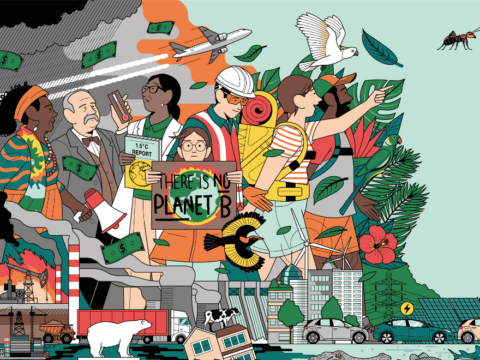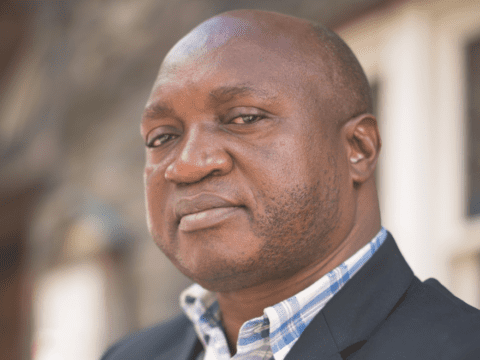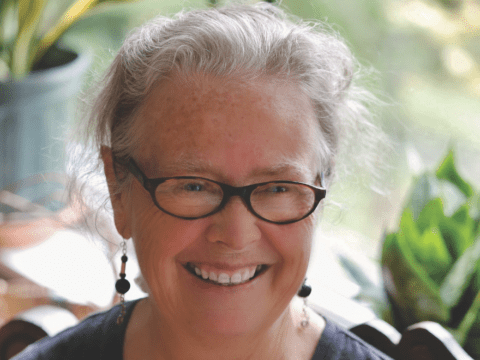At the World AIDS Conference in Mexico City last summer, prominent among the exhibits was a display of photographs from Namibia entitled Still Life. Namibia is a country of 1.5 million in southern Africa with HIV infection rates of more than 15 percent. But — exceptional for Africa — it also has a high proportion of people on antiretroviral therapies. The photos, all taken by people infected with HIV, challenged the notion of AIDS as an automatic death sentence. With its play-on-words title, the exhibit suggested that though there are hardships, all of them involve life.
HIV/AIDS, the devastating global plague that first emerged in the early 1980s and was given its name in 1984, has entered its second generation. It has been part of the entire lives of young people like Evelina Ashipala, the co-ordinator of the photo exhibit, who was born in 1982. The generational turnover is, in many ways, profound. It means that many of those who specialize in research or treatment have now spent the whole of their careers focused on HIV/AIDS and are about to retire; the present generation of scientists, health-care specialists and community workers came of age during the epidemic. The first generation of AIDS orphans are now well into adulthood.
When everyone from scientific researchers to community activists got together at the AIDS conference in Mexico City, it was the 17th such world gathering. This time, something in the mood of the 20,000 participants was different. In presentation after presentation, those working on AIDS were reminded to think of themselves not as addressing some short-term emergency, but in for the long haul. AIDS is now acknowledged as a “mature disease.”
This is sobering when we look at the list of things left on the table after AIDS’s first 25 years. A generation on, 30 million people have died. Only 10 percent of those in the most at-risk areas, like sub-Saharan Africa, even get tested for HIV. The prevention strategies — sexual abstinence, sticking to one partner, using condoms — have fallen far short of stemming the tide of a disease that continues to infect 2.7 million more people each year. Antiretroviral treatments, the one thing that keeps people alive, have been around for a decade, yet only 31 percent of people living with HIV worldwide have access to them. Women now represent 50 percent of HIV-positive people worldwide, and 60 percent in Africa. At-risk groups, such as North American gay men, who have been the targets of massive public education campaigns, have shown signs of a relapse. In New York City, the rate of infection in 13- to 19-year-old males has doubled in the last five years.
There is some news we might take as “good.” Last winter, the organizations charged with the exceedingly imprecise task of compiling global AIDS statistics stated that the number of people living with HIV worldwide has dropped. Nobody ventured to say that this might be because so many people have died, but statisticians argued that infection rates have slowed.
A little over 10 years ago, I stood in the hot sunshine outside a clinic at Kenyatta National Hospital in Nairobi, Kenya, with a young doctor named Denis Jackson. A Scot from Glasgow, Jackson worked with a Canadian project rapidly becoming famous for having isolated a group of shantytown sex workers believed to be immune to HIV. The project’s main lab was at Kenyatta Hospital, where you could likewise find other adjuncts of the AIDS business, including, just behind us, the city morgue where a noisy crowd gathered. Pausing, Jackson offered a matter-of-fact pronouncement. “Within a decade,” he said, “AIDS will become a tropical disease.”
By tropical disease, he meant something the rest of the world would get used to watching Africa endure. Back in North America, AIDS had then already been quarantined into a disease primarily of gay men and needle-sharing addicts. Early versions of the drug cocktails that would manage the disease were starting to become available. In Africa, none of this was happening. That morning, I had taken a look at the obituary pages in the Nation, the Kenyan newspaper. Youngish looking men and women appeared in photograph after photograph next to their funeral details. Jackson, who had worked in Somalia and the Congo, didn’t seem particularly angry when making his observation, simply resigned.
Malaria was his comparison. Eradicated in much of the world, malaria killed (and still does) more people per day in Africa than AIDS. And while it would not be correct to say that malaria is ignored, it is tolerated. Visiting westerners know how to protect themselves. The locals stumble along.
In the decade since 1998, things haven’t gotten much better. According to UNAIDS, Southern Africa accounts for 67 percent of all people living with HIV and for 72 percent of AIDS deaths in 2007. Of the eight countries in the world with the highest rates of new prevalence, all are in Southern Africa. Hoped-for breakthroughs never occurred. In 1998, it was assumed that the startling information about the prostitutes in Jackson’s project might result in a vaccine, packaging what the immune women possessed and making it available to all. It hasn’t happened. In Kisumu on Lake Victoria in Kenya, researchers from the universities of Illinois and Manitoba caused excitement when their clinical trial showed that circumcising young men between the ages of 18 and 24 reduced their chances of contracting HIV by 60 percent. Yet 60 percent was not 100 percent.
About a year ago, Peter Piot, head of UNAIDS, told a meeting of the Economic Commission for Africa in Addis Ababa, Ethiopia, that 1.6 million had died of AIDS in sub-Saharan Africa in 2007 alone. “HIV infection patterns are changing in many countries in eastern and southern Africa,” he said, “with most people now being infected outside high-risk sexual behaviour [meaning they are being infected by their regular sexual partners], and new drug resistances are emerging, creating a need for new lines of antiretroviral treatment.”
At the World AIDS Conference, I met Sabelo Mashwama, a 33-year-old engineer from South Africa who gave up his profession to become director of the Anglican AIDS and Health-care Trust in Cape Town. Mashwama said hopefully, “The stigma experienced by people with HIV has decreased over the past five years. And awareness has increased.” Yet he gets discouraged. His job, which involves HIV prevention, awareness and support, puts him face-to-face with a lot of young people. They still engage in unsafe sex, he says. “A woman dies from AIDS, her daughter is pregnant and the baby gets AIDS from mother-to-child transmission.”
The next generation faces a newly constituted agenda, the first item of which is to do a better job on prevention. A lot of time has been wasted waiting for either a vaccine or a cure. Stefano Bertozzi, head of HIV prevention for Mexico, bluntly charges that “billions of dollars were spent on what should have been an easily preventable disease.” The other failure is that it took far too long for the world to grapple (if it even has yet) with how devastating the plague could be for the world’s poorest regions.
The new president of the International AIDS Society is Julio Montaner, an Argentinean-born Canadian. He came to prominence as a medical doctor and an advocate for Vancouver’s safe injection site for intravenous drug users. His take on the future underlines AIDS’s stark dichotomy.
“While entirely preventable,” he says, “it continues to spread. And there is no cure.”
***
This story first appeared in The United Church Observer’s February 2009 issue with the title “AIDS enters adulthood.”















